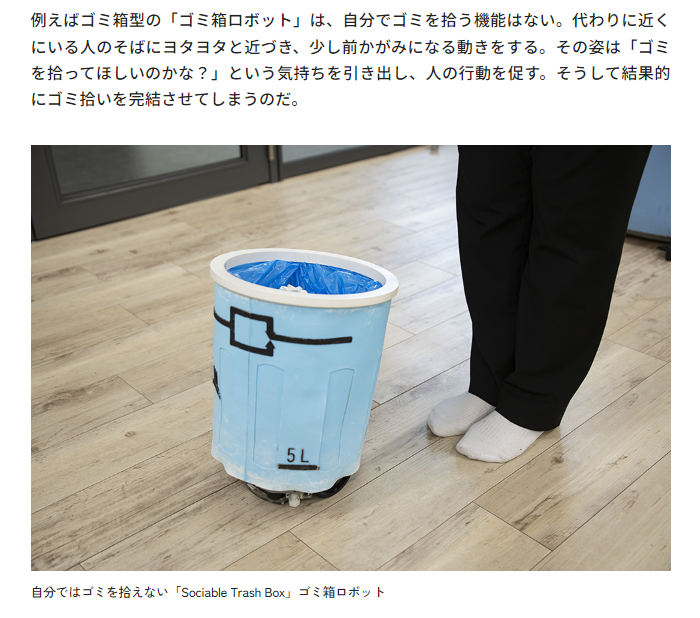2023.12.12
The Presence of Anthropomorphized Objects
-
 Akira Okamoto
Akira Okamoto
-
 Yuji Tsuchiya
Yuji Tsuchiya
-
 Kohei Akiyama
Kohei Akiyama
The Presence of Anthropomorphized Objects2023.12.12

akira
okamoto
I was in Tokyo yesterday and saw a delivery robot.
It was subtly blinking, which was a nice touch, but it looked bored, just standing there in standby mode.



Yuji
Tsuchiya
The presence of anthropomorphized objects might require a lot of consideration.
These robots definitely donʼt think theyʼre "bored," but onlookers might feel sorry for them, thinking they look bored or that itʼs sad to make them stand around with nothing to do. Some might even say, "This is robot abuse! The companies making them do this are terrible!"

Akira
Okamoto
Thinking about it that way, being able to perform only a single task might be a bit limiting.
Maybe the robot could find things to do when there are no deliveries, like cleaning, monitoring, or providing directions. There could also be robots that give instructions to these waiting robots.

Yuji
Tsuchiya
Thatʼs interesting. People might start expecting robots to change their behavior, saying things like, "These days, there are too many robots just waiting for instructions" or "Why canʼt they think and act on their own?" This expectation itself comes from anthropomorphizing them.

Kohei
Akiyama

This is similar to the concept of "weak robots." These robots, through gestures that make people want to help them, might incorporate human actions as part of their functionality.
Creating a prosperous society with "weak robots" that canʼt do anything on their own
Hesitant and prone to mistakes, these "weak robots" make you want to achieve things together precisely because they are incomplete and imperfect. Engaging with them might help us reevaluate human-to-human communication, as the relationship between "me" and "you" subtly transforms into "us."



